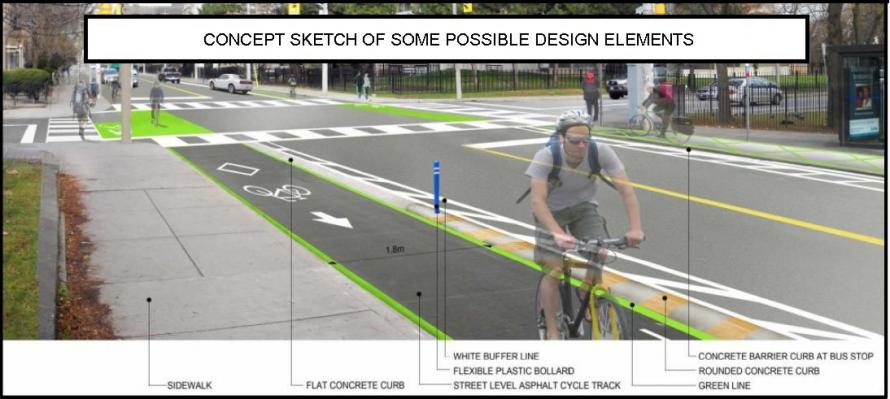In an unprecedented challenge to the City, four legal challenges have been submitted to the City and the Minister of the Environment claiming there has been shoddy process on Front Street, John Street and Jarvis Street that have resulted in plans that exclude cyclists and make conditions unsafe. I haven't heard of any other North American city having so many legal challenges to its planning authority and process at once.
Cycle Toronto is challenging the decision to take out bike lanes on Jarvis Street, stating that making the street more difficult for cyclists is doing environmental damage, represented by law firm Iler Campbell (letter to city). Cycle Toronto is also challenging the EA for Front Street, stating that the remake of the connections to this major transportation hub is making conditions worse for cyclists and that the City didn't consider Metrolinx's concerns regarding cycling infrastructure, represented by Papazian, Heisey and Myer Barristers and Solicitors (CycleTO's initial submission, letter from Metrolinx to City, letter to City, response from City, Part II request to Province and response to the City). Then on John Street the bike shop Urbane Cyclist is challenging the John Street EA, arguing that the project will force cyclists from the best cycling connection in the area with no Plan B in place, represented by Ian Flett. And finally, Don Wesley, Ward 20 resident and Cycle Toronto volunteer is challenging John Street and represented by Fogler Rubinoff LLP (letter to City by CycleTO, letter to City by Wesley, Part II request to Province).
What is most galling (other than the Jarvis bike lane removal) is that what passes for a "comfortable cycling environment" is a wide curb lane with sharrows (quoting a condescending Stephen Schijns, Manager in Infrastructure Planning, in his response to Cycle Toronto). This during a time when American cities are undertaking quite progressive initiatives like the Green Lane Project which will support cities in developing dedicated, separated green bike lanes. Instead of providing world class bike lanes, cycling facilities in Toronto are way down on the list of importance. Instead of bike lanes we're given sharrows and a wide curb lane on a busy arterial road. I'm sorry but sharrows do little to encourage people to feel safe enough to take up cycling.
Front Street, according to Schijns, will include "a wide single lane in each direction marked by sharrows, and a pedestrian-oriented traffic-calmed environment which will have the effect of maintaining vehicular traffic speeds at comfortable levels. The 4.75 m wide lanes will be substantially wider than the vast majority of curb lanes on City streets and will provide a comfortable cycling environment." Schijns also wishes to inform cyclists - as if we didn't know already - that "the plan also recognizes that pedestrians and cyclists are not the only users of Front Street." And that the reason that a dedicated bicycle lane wasn't included was because of a "delicate balancing act" whereby City engineers had to figure out how best to convince the broad public that sharrows are actually "cycling infrastructure". Meanwhile the EA was approved while failing to address the concerns of Metrolinx that the cycling infrastructure was poor.
Let's hope that this wakes the City up that it can't continue to expect cyclists to just take the little scraps off the table. The Bike Plan has been dangled in front of cyclists for over a decade but we've met plenty of resistance and foot dragging from both politicians and even many Transportation Services staff. It didn't seem to matter much if there was a progressive mayor like David Miller in power or a regressive mayor like Mel Lastman or Rob Ford, there has been certain level of inaction and resistance in making the city safer for cyclists. What is needed is to make foot dragging harder to accomplish.


